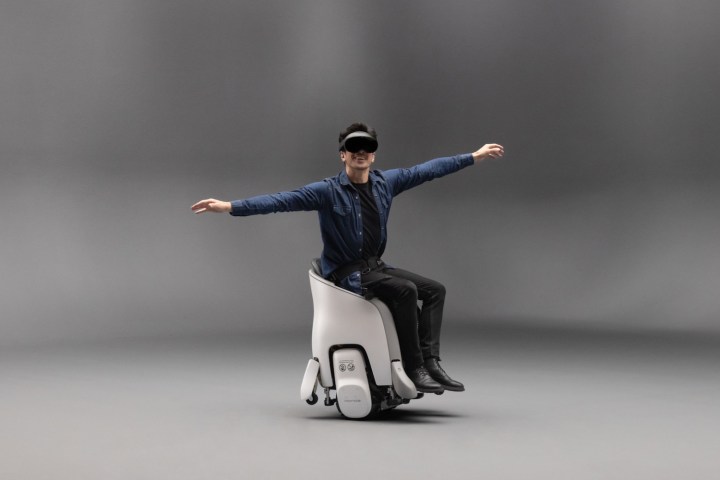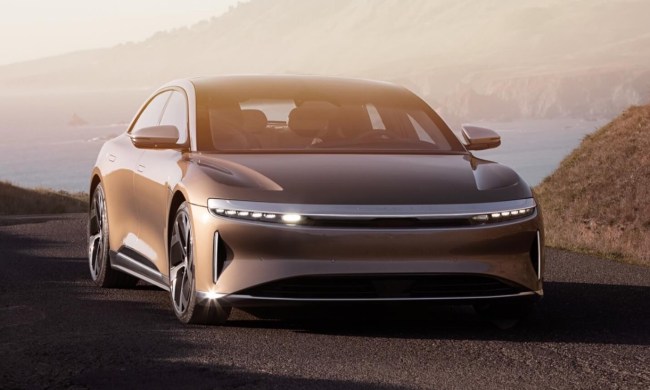
Honda is taking virtual reality mobile. Set to debut at SXSW 2024, the Honda XR Mobility Experience combines VR headsets with the automaker’s Uni-One “personal mobility device.”
First shown in 2023 in Japan, the Uni-One is like a more comfortable Segway. It’s self-balancing and has two ride heights. At its lower height, which puts the user roughly at eye level with seated people, it’s controlled via a joystick. But raise it up to the taller ride height, and users can move the Uni-One in all directions or turn around hands-free simply by shifting their weight.
Power comes from what the company calls the Honda Omni Traction (HOT) drive system. Two wheels provide driving force, while motors read onboard sensors to determine the desired direction of travel based on the user’s posture. Four unpowered auxiliary wheels help stabilize the chair when it’s in its low position. The 154-pound Uni-One has a top speed of 3.7 mph but achieves its maximum range of five miles at a steady 2.5 mph.
Honda thinks the Uni-One could be a fun toy for use at entertainment venues. In one 2023 demonstration at Japan’s Suzuka racetrack, the automaker paired the Uni-One with augmented reality tech, having users navigate through scenes displayed on a tablet. Now, it’s ditching the tablet and letting users go completely hands-free with the XR Mobility Experience.
SXSW attendees will have the opportunity to strap into a Uni-One, put on a VR headset, and either experience “the peaceful experience of floating in the sky or the exhilarating feeling of gliding along a half-pipe path,” according to a Honda press release. The experience may prove exhilarating, but there’s no accounting for how users will look doing it.
Honda claims to be working toward U.S. commercialization of the XR Mobility Experience or something similar. The automaker believes it would be a good fit for venues with large, uncluttered spaces, such as theme parks or even shopping malls, where users could, for example, play racing games in which they navigate a course in Uni-Ones.
Honda has always been particularly interested in forms of mobility beyond cars. It started out making motorcycles and now manufactures everything from lawn mowers to private jets. A device like the Uni-One certainly fits that philosophy, although vehicles like Honda’s forthcoming line of EVs will likely remain the company’s core business.



